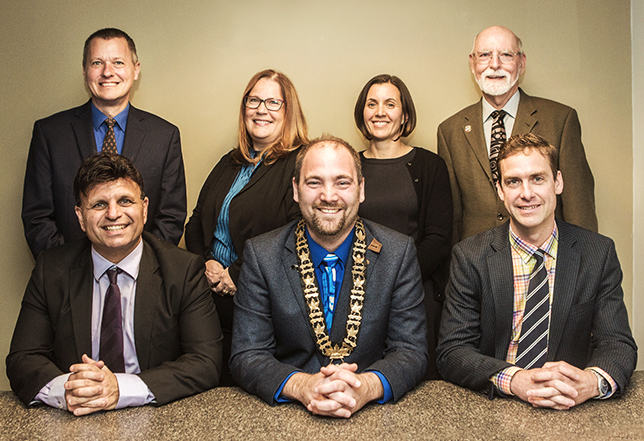COURTENAY, B.C- Courtenay’s municipal government will likely be raising resident’s water and sewer bills, but for good reason.
That’s according to information presented at last night’s committee of the whole meeting, during which council discussed two planned increases to the city’s water and sewer fee structure.
For 2019, those increases are being set at 6.5 per cent for water, with the average family residence seeing an annual increase of $30.39.
For sewer, the increase is being set at five per cent, with the average family residence seeing an annual increase of $16.21.
City staff asked for council to approve both rate increases.
There are a variety of factors at play with the rises. Those include a rise in water rates from the Comox Valley Regional District (CVRD) which the city purchases water from, and more were detailed during council’s discussion of the matter.
Trevor Kushner, the city’s director of public works, described the changes as needed to keep the water and sewer system maintained, which would prevent costly emergency repairs in the future.
Speaking to Councillor Doug Hillian about the water rate increase, Kushner indicated that the increase in rates could be reduced if the city cut back on maintenance, but the existing water system assets wouldn’t last as long as they could if that was done.
A small rise in personnel costs was also part of the need for maintenance.
After the water rate increase was passed without opposition, the sewer increase was brought to the table.
As discussion progressed, Hillian eventually described the increased cost as comparable to “a couple of pizzas a year” on top of what residents already pay. Shortly after, council passed the increase without opposition.
Speaking after the meeting ended, Courtenay mayor Bob Wells was in favour of both increases.
“Personally, it’s one of the things I ran for, when I ran for mayor, is to make sure that not only are we trying to have that whole life cycle, cost of things, but do we actually have that preventative maintenance in place so we’re not in reactive mode?” said Wells.
“What we find, is when you’re in reactive mode, you’re paying far more for things, but because you’re under the gun, emergency circumstances, you just pay it no matter what.”
Wells believed it was better to have a plan in place rather than defer the cost.
“Fifth Street Bridge is an example of something that was once hundreds of thousands of dollars to re-surface decades ago and now they look at it and they’re at six or seven million,” said Wells.
“That’s a long divide between what they (the city) once could have paid, and what they’re looking at having to pay.”
Wells wanted to avoid something similar happening with the city’s water and sewer systems, and expressed hope that the city might be able to get more tax revenue sharing from the province to help pay for similar costs.
“The things that we’re doing are going to have a long-lasting impact, in terms of saving us in the long run,” said Wells.
With the approval, the increases will be brought back as a bylaw next Monday, with final approval later in March.






